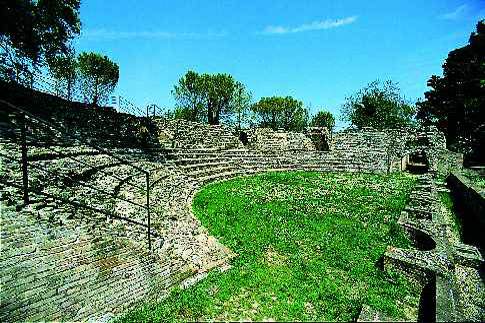“The Archaeological Park of Falerio Picenus was located in a strategic position at the fork in the road leading from Fermo to Ascoli and to Urbs Salvia (present-day Urbisaglia). In 90 BC it was the site of a battle in which the Piceni army defeated the Romans led by Gnaeus Pompeius.Discovered in the eighteenth century it contains a number of architectural works. The Theatre, which was built in AD 43 and dedicated to the emperor Claudius, was built in brick with vaults in stone.
It adopted the classic layout used by the Romans for such buildings, with the auditorium and orchestra in a semicircle, and the stage complex in front. The well-preserved structure, which has good static qualities, is the venue for an outstanding theatre season in the summer.The ruins of the 5000-seat elliptical Amphitheatre, built in the first century AD, are close by. Other archaeological remains from Roman times include the Well, which can still be used, the “Bagni della Regina” (the queen’s baths), a trapezoidal aqueduct reservoir, and the remains of the “Terme” (thermal baths).
The presence of the Civic Archaeological Museum in Falerone, about two kilometers away from the archaeological park, allows a better understanding of the ancient Roman city, illustrating aspects of its culture such as handicrafts and local artistic events.”








